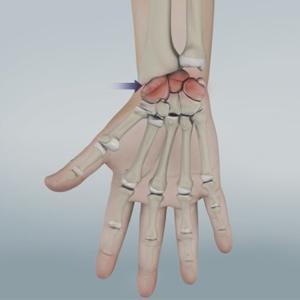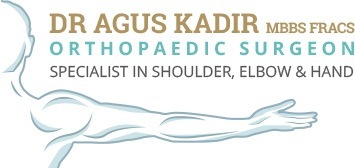Arthritis of the Wrist

The ends of the bones within a joint are covered by a spongy tissue called cartilage, which is lubricated by synovial fluid. These help in the smooth, friction-free movement of the joints. Wear-and-tear or damage to these tissues can lead to arthritis. Arthritis is an inflammatory condition of the joints. Arthritis in the wrists can cause swelling, pain, stiffness, weakness and joint deformity, all of which interfere with the daily activities of the wrist.
The wrist joint is comprised of eight carpal bones that join the radius and ulna, the two forearm bones. Traumatic injuries, fractures and joint dislocations in the wrist make you more susceptible to developing arthritis.
There are several types of arthritis. The most common are:
- Osteoarthritis: Also called degenerative joint disease, osteoarthritis is the most common type of arthritis that occurs due to wear-and-tear that is associated with the aging process.
- Rheumatoid Arthritis: This is an auto-immune disease in which the body’s immune system attacks healthy joints, tissues and organs. Occurring most often in women, it inflames the synovium. Rheumatoid arthritis most commonly affects the small joints of the hands and wrists, and tends to be symmetrical (affecting the same joint on either side of the body, at the same time and with the same symptoms). It usually affects the joint of between the radius and ulna.
- Post-traumatic Arthritis: Arthritis developing after an injury to the wrist is called post-traumatic wrist arthritis. The condition may develop years after trauma such as a fracture, severe sprain or ligament tears.
Your doctor performs a thorough physical examination and orders blood tests, X-ray imaging and bone scans of the wrist to diagnose and ascertain the severity of arthritis.
Nonsurgical treatment methods for relieving pain in an arthritic joint include activity modification, NSAIDs, use of splints and steroid injections.
Surgery is usually considered if nonsurgical treatment fails to provide relief. There are different surgical procedures, usually performed through arthroscopy (minimally invasive surgery), and may include:
- Proximal Row Carpectomy: This involves the removal of three carpal bones to relieve pain and allow partial wrist motion.
- Arthroplasty: In this procedure, your surgeon removes the affected joint and replaces it with artificial implants.
- Arthrodesis: A fusion, also called an arthrodesis involves removal of the damaged regions of the bones of the wrist and fusing the bones together, using metal wires or screws for support. Fusion can be partial, retaining some amount of wrist movement, or complete where all eight carpal bones as well as the forearm bones are fused, eliminating any kind of movement at the wrist, but not affecting forearms rotation.
Your surgeon will discuss your options and help you decide which type of surgery is most appropriate for you.
Other Hand & Wrist List
- Trigger Finger
- Scaphoid Fracture
- Dupuytren’s Contracture
- Flexor Tendon Injuries
- Wrist Pain
- Ganglion (Cyst) of the Wrist
- Wrist Tumours
- Arthritis of the Hand (Digit Arthritis)
- Wrist Fracture
- Hand Fractures
- Ligament Injuries
- Tendinitis
- Tendon and Nerve Lacerations
- Normal Hand Anatomy
- Carpal Tunnel Syndrome
- Arthritis of the Thumb

 Menu
Menu






